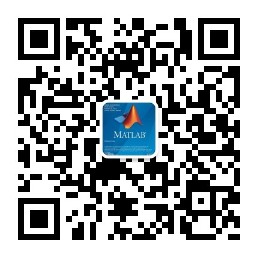博文
[转载]【无人机】【2013】基于多无人机的视觉估计与跟踪
||
本文为加拿大多伦多大学(作者:Mingfeng Zhang)的博士论文,共151页。
小型无人机(UAV)的有效载荷能力和供电能力非常有限,而它们被设想部署在复杂的环境中执行具有挑战性的任务;因此,提高它们的整体自主性和能效势在必行。本文提出了一种基于视觉的小型固定翼无人机目标监控系统,该系统利用单目相机等无源视觉传感器,使无人机能够自主定位和跟踪不合作的地面运动目标。由于目标估计和跟踪是许多无人机任务的关键功能,该系统可以极大地提高无人机的自主性。
本文从多个角度对无人机GMT跟踪问题进行了研究,提出了三种不同的跟踪算法。第一种跟踪算法是基于滑模控制的,它使固定翼无人机能够保持相对于GMT的恒定距离,速度达到无人机的巡航速度。第二种跟踪算法是针对规避GMT而设计的,它是在追逐规避博弈理论的框架下推导出来的,保证了GMT的持续观测;第三种算法是基于视觉伺服控制,直接利用视觉测量作为反馈信号来关闭控制环路,所以不需要GMT的状态来协助追踪。本文的第二部分提出了一种编队飞行算法,使多无人机在目标跟踪和目标运动分析中能够协同工作。编队的运动完全由其虚拟领队决定,因此,为单个无人机开发的跟踪算法可以通过在虚拟领队上的实现直接扩展到多无人机编队。本文的第三部分设计了一个协同非线性滤波器,以利用多视觉无人机恢复GMT的状态。通过融合多源视觉测量,保证了该方位估计问题的可观测性。为了适应GMT未知的动态特性,滤波器的设计要特别注意。本文提出的跟踪、估计和编队算法在大量的数值模拟中得到了验证。
Small unmanned aerial vehicles (UAVs) havevery limited payload capacity and power supply, while they are envisioned to bedeployed in complicated environments to perform challenging tasks; therefore,it is imperative to improve their overall autonomy and energy efficiency. Thisthesis presents a vision-based target surveillance system for small fixedwingUAVs, which provides them with the capability of autonomously localizing andtracking an uncooperative ground moving target (GMT) using passive visionsensors such as monocular cameras. This system could greatly improve theautonomy of UAVs since target estimation and tracking are critical functionsinvolved in many UAV missions. In this thesis, the UAV-GMT tracking problem isstudied from various perspectives, and three different tracking algorithms aredeveloped. The first tracking algorithm is based on sliding mode control, andit enables a fixed-wing UAV to maintain a constant distance relative to a GMTwith a speed up to the UAV’s cruising speed. The second tracking algorithm isdesigned to deal with an evasive GMT. It is derived in the framework of thepursuit-evasion game theory and guarantees persistent observation of the GMT.The third one, based on visual servoing control, directly uses visualmeasurements as feedback signals to close the control loop, so it does notrequire the GMT’s states to assist tracking. The second part of this thesispresents a formation flight algorithm which enables multi-UAV cooperation intarget tracking and target motion analysis. The motion of the formation issolely determined by its virtual leader; therefore, tracking algorithmsdeveloped for a single UAV can be directly extended to a multi-UAV formation throughimplementations on the virtual leader. The third part of this thesis develops acooperative nonlinear filter in order to recover the states of a GMT usingmultiple vision-enabled UAVs. Through fusing visual measurements from multiplesources, the observability of this bearing-only estimation problem is ensured.Special attention is taken in the filter design in order to accommodate theGMT’s unknown dynamics. The tracking, estimation, and formation algorithmsdeveloped in this thesis are verified in extensive numerical simulations.
1. 引言
2. 基于徘徊的跟踪
3. 持续跟踪
4. 基于图像的目标跟踪
5. 基于多无人机的协作跟踪
6. 基于多无人机的协作估计
7. 结论与未来工作展望
附录 投影算子
更多精彩文章请关注公众号:
https://blog.sciencenet.cn/blog-69686-1227690.html
上一篇:[转载]【电信学】【2002.01】室内移动导航系统的设计与实现
下一篇:[转载]【计算机科学】【2012.06】激光雷达点云地理参考的精度评估